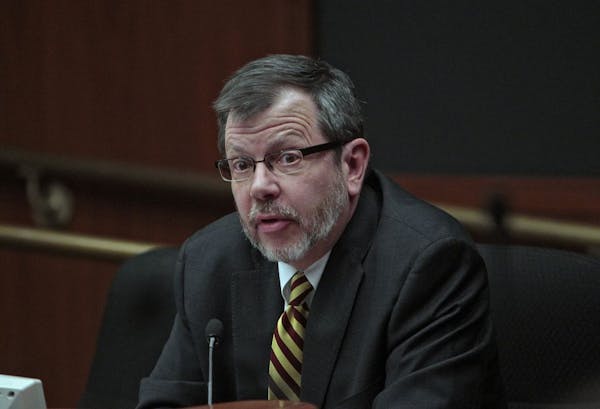The University of Minnesota is experimenting with the hot idea of a year-round academic calendar. President Eric Kaler announced Friday that two undergraduate programs would pilot a year-round plan, with a beefed-up summer term, before the entire university considers the switch.
"As we looked at this, it was clear that this is the kind of change that's best done carefully and thoughtfully," he said.
Students who start next fall in two tracks within the College of Design will be able to pick a three-year route, taking full credit loads during the summers.
Kaler first pitched the idea of the "remarkably revised" academic calendar during last year's State of the University address as a way to "work smarter," rethinking higher education's structures to become more efficient. Since then, a team has been quietly studying possibilities and problems. The calendar could give students a quicker route to graduation and make better use of buildings. But it also clashes with financial aid schedules and conflicts with students' traditional time for work and internships.
Across the country, demand for summer courses is rising. But at the University of Minnesota and elsewhere, students have snubbed condensed course loads. The pilots will test a still uncertain question: Will students sign up?
Natalie Reierson, a junior, said she would "definitely" enroll full time in summer classes if it meant graduating in three years. She plans to go to medical school, maybe earning a public health degree at the same time, so she has many years of school on her horizon.
"Being able to get done with the entire process and get into a career sooner is appealing," said Reierson, who is majoring in nutrition.
The U already offers many summer classes, but a year-round calendar would amplify the summer term's length, course offerings and enrollment.
The university will also standardize the summer term to encourage greater attendance, setting an across-the-board start date. Last summer, courses began on 69 different days and ended on 59, Kaler said. By 2014, all courses will start on the same day and run seven weeks.
A summer 'ghost town'
Thomas Fisher, dean of the College of Design, has cheered the concept of a year-round academic calendar.
"I have long felt that we have, frankly, all this capacity in the summer that's under-utilized," Fisher said. "We have air-conditioned buildings. We have staff here on 12-month appointments. Yet it's a ghost town."
The majors piloting the three-year track -- graphic design and retail merchandising -- are popular and, "particularly in the case of graphic design, have real space restrictions," Fisher said. By spreading students over three terms a year, rather than two, the college hopes to accommodate more students.
The college has tried this before. Years ago, it offered students in those two majors a three-semester option. But students didn't enroll. This time, though, the university has embraced the effort, Fisher said, which makes a "huge difference."
Graphic design will require students to make a formal commitment to the faster track, the college's proposal says.
Such a schedule could "enhance the learning experiences of students, allow flexibility for students to accelerate their degree completion and provide opportunity for increased revenue for colleges," according to a 2011 report by a faculty group that studied the idea.
But the report also described drawbacks -- financial aid at the top of the list.
College students' financial aid is built around the traditional academic year. For example, federal Pell grants for low-income students are not available in the summer.
"This was a tricky one," said Robert McMaster, vice provost and dean of undergraduate education. "We would need to come up with new financial aid models to redistribute existing funds into three terms -- a longer-term project."
For the pilot programs, the university will give students "a modest set of scholarships," he said by e-mail.
Those students can still take a semester off for work or an internship, but maybe in fall, rather than summer. Faculty members could participate in that kind of "staggering" too, Fisher said.
"We'll see where the student demand goes," he said. "Some want to get through in three years, while others like the idea of staggered terms.
"Then there are the traditionalists who are just not going to give up their summer vacation."
Jenna Ross • 612-673-7168 Twitter: @ByJenna

Trail section at one of Minnesota's most iconic spots closing for rehab

Will 'shotgun only' zone for deer in southern Minnesota be abolished?

Four Minnesotans catch salmonella in outbreak linked to basil sold at Trader Joe's

